Traveling is one of the most enriching experiences life offers, but navigating language barriers can often pose a challenge.
For Nigerian tourists, visiting English-speaking destinations can make the journey smoother and more enjoyable, eliminating the stress of miscommunication.
Whether you’re a solo traveler, part of a group, or exploring with family, being able to speak the local language is a significant advantage.
For example, I had to make a business trip some time ago to a City in the Eastern Region of Nigeria.
As someone who had spent most of her life in the western region of Nigeria, I was concerned that I might experience some challenges, like what to eat, how to communicate with the locals, how to ensure that I am not at a security risk, etc.
To be on the safer side, I made the decision to only eat at a large chain restaurant, or eat from the hotel’s restaurant, relying strictly on ride-sharing apps for transport and well-known grocery stores.
In fact, I spent more time in my hotel room than I did aside from the time I spent doing what brought me to the city.
It was a safety precaution for me and as much as it worked, it hindered me from fully enjoying my time in that city.
The same applies when you visit a destination whose primary language isn’t English, while you might have fun exploring their languages, nothing beats being able to conveniently communicate with others in the language you understand.
In this article, I will be sharing the top English-speaking destinations you should consider for your next adventure.
These countries not only offer the comfort of language familiarity but also boast rich histories and cultures, and stunning spots that make them must-visit locations.
Here are the top English-speaking destinations around the world that you should consider for your next trip.
1. New York City, United States of America
The United States, often referred to as the “land of opportunity,” is a melting pot of cultures, with a rich history shaped by waves of immigration.
English is the predominant language, and the country is known for its diversity in both people and culture.
From the bustling streets of New York City to the serene beaches of California, the U.S. offers a variety of experiences.
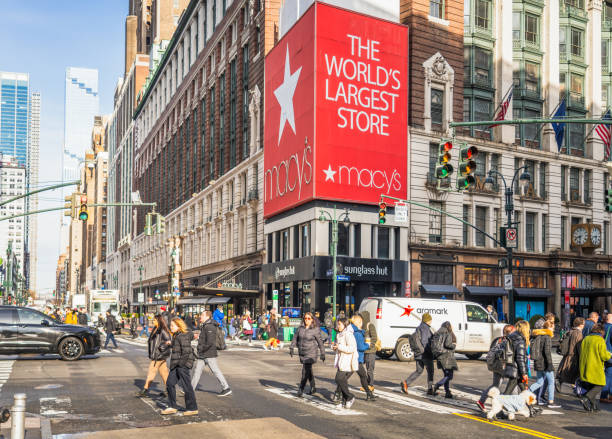
The country’s culture is deeply rooted in its values of freedom and democracy, with each state offering its unique flavor of American life.
Visitors can explore historical landmarks, world-renowned museums, and iconic sites like the Grand Canyon and the Statue of Liberty.
2. Sydney, Australia
Sydney’s transformation into an English-speaking destination began with the arrival of the First Fleet in 1788, establishing a British penal colony.
As the colony grew, English became the dominant language, brought by British settlers, convicts, soldiers, and officials.
The British government encouraged immigration from other English-speaking countries, such as Ireland and Scotland, solidifying English as the primary language.
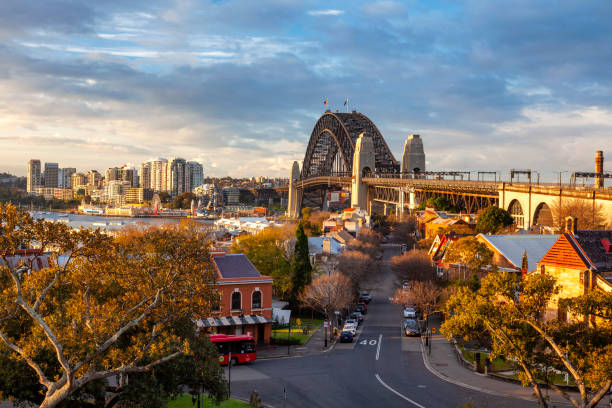
Over time, Sydney’s English-speaking character was shaped by various events, including convict transportation, British immigration, and the Australian gold rush.
Despite becoming a culturally diverse city, English remains the predominant language spoken by the majority of residents.
Today, Sydney is a thriving metropolis, with English as its linguistic backbone, reflecting its rich history as a British settlement and its evolution into a global city.
Sydney boasts stunning beaches, a vibrant cultural scene, and iconic landmarks like the Sydney Opera House. Don’t miss the famous Bondi Beach and the scenic Blue Mountains.
3. Toronto, Canada
The roots of Toronto’s English-speaking identity date back to 1793, when British loyalists founded the city as York, the capital of Upper Canada.
As a British colony, English was the language of government, commerce, and education, setting the stage for its dominance.
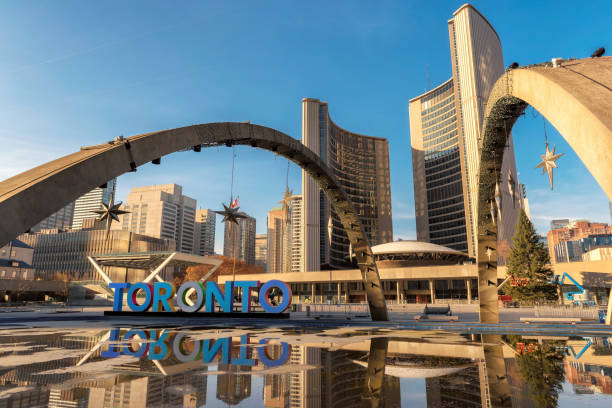
The city’s early growth was fueled by British immigration, solidifying English as the primary language.
Throughout the 20th century, Toronto’s cultural landscape evolved through immigration from around the world.
Despite becoming one of the most multicultural cities globally, English remained the most widely spoken language, underpinning business, government, and education.
Today, Toronto is a vibrant English-speaking destination, where diversity and language coexist, making it a unique and dynamic city.
Toronto has a thriving food scene and attractions like the CN Tower and Kensington Market.
Visit the nearby Niagara Falls for a breathtaking natural wonder.
4. London, United Kingdom
London’s journey to becoming an English-speaking city is a rich and complex one.
It began with the Romans, who introduced Latin to the area, but as their empire declined, Germanic tribes like the Angles and Saxons moved in, bringing their languages with them.
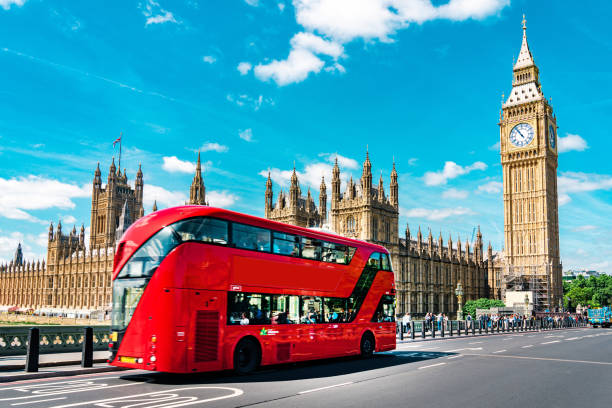
Over time, their dialects merged to form Old English, which eventually gave way to Middle English.
This was influenced by the Norman Conquest, which introduced French and Latin into the mix.
As London grew into a major commercial and cultural center, its dialect became the standard for the English language thereby making it an English-speaking destination.
Despite the many invasions, migrations, and cultural exchanges that have shaped the city’s language over the centuries, English has emerged as the common thread that binds Londoners together.
5. Cape Town, South Africa
Cape Town’s history as a British colony has made it a haven for English speakers which automatically makes it an English-speaking destination.
The British took control of the Cape Colony from the Dutch in 1806, and since then, English has become an integral part of the city’s fabric.
Today, Nigerians visiting Cape Town can soak up the breathtaking natural beauty of the city, from the iconic Table Mountain to the stunning Cape of Good Hope.
6. Dublin, Ireland
Dublin’s transformation into an English-speaking destination was a gradual process spanning centuries.
Founded by Vikings in 841, Irish was the dominant language until the Norman invasion in 1169, when French and Latin were introduced.
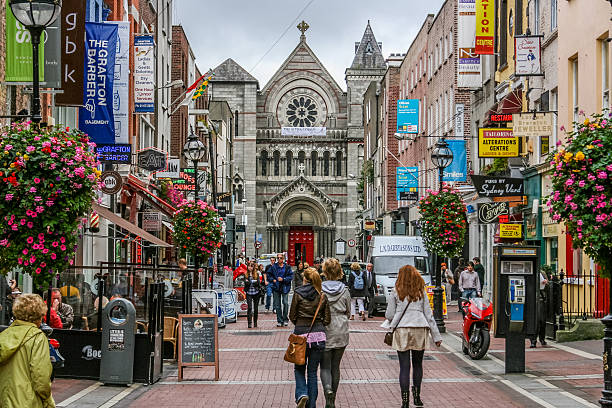
English arrived in the 12th century but didn’t become dominant until Ireland became a British colony in the 17th century, replacing Irish as the primary language.
Despite a resurgence of interest in Irish during nationalist movements, English remained prevalent, solidified by the Acts of Union in 1801.
Today, while Irish is an official language, English is the dominant language spoken in Dublin, making it an English-speaking destination.
Ireland’s charming capital city is famous for its pubs, live music, and friendly locals.
Visit the Guinness Storehouse, Trinity College, and the scenic Cliffs of Moher.
7. Vancouver, Canada
Vancouver’s journey to becoming an English-speaking destination began with the arrival of British explorer George Vancouver in 1792, who claimed the area for Britain.
This marked the beginning of English as the language of government, trade, and commerce.
The Fraser Canyon Gold Rush of 1858-1861 brought an influx of English-speaking prospectors, solidifying English as the dominant language.
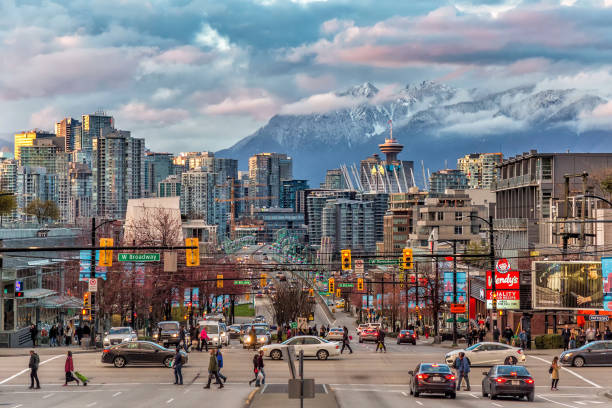
As Vancouver grew, immigration from Britain, Europe, and Asia continued to shape the city’s language terrain.
Today, English is the most widely spoken language, making Vancouver an English-speaking destination.
However, the city’s indigenous roots and cultural diversity are still evident, with many indigenous languages and dialects spoken by the original inhabitants and their descendants.
This complex linguistic heritage continues to define Vancouver’s unique cultural identity.
Surrounded by mountains and water, Vancouver offers outdoor activities like hiking and kayaking.
When you visit, don’t forget to explore Stanley Park, Granville Island, and the Capilano Suspension Bridge while you are in Vancouver.
8. Melbourne, Australia
Melbourne is a cultural hub with street art, live music, and a thriving food scene.
Melbourne, Australia was founded in 1835 by British settlers, establishing English as the language of government, commerce, and education.
The Victorian gold rush of the 1850s brought a surge of English-speaking immigrants from Britain, Ireland, and other parts of Australia, solidifying English as the dominant language.
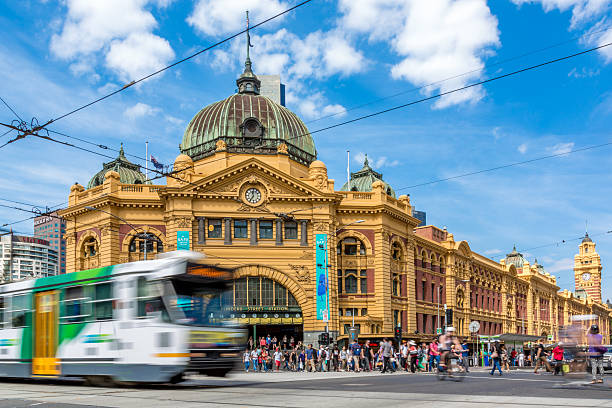
Throughout the 20th century, Melbourne continued to attract immigrants from around the world, adding to its cultural diversity.
Today, Melbourne is a vibrant, English-speaking destination, with a rich cultural heritage shaped by its history and diversity.
Visit the Royal Botanic Gardens, Federation Square, and the iconic Great Ocean Road.

9. Auckland, New Zealand
Auckland is the largest city in New Zealand, and it offers a unique blend of urban sophistication and natural beauty.
With a significant English-speaking population, Auckland is a welcoming destination for Nigerian travelers.
The city’s English-speaking heritage can be attributed to its early colonial history when British settlers established Auckland as a trading post.
Today, English is widely spoken throughout the city, making it easy for visitors to navigate and communicate.
Nigerian tourists can look forward to experiencing Auckland’s stunning harbor, visiting iconic landmarks like the Sky Tower, and exploring the city’s many museums and art galleries.
They can also take advantage of Auckland’s proximity to natural wonders like the Bay of Islands and the Hobbiton Movie Set.
10. Barbados
Barbados became an English-speaking destination due to its history as a British colony from 1627 to 1966.
English is the official language, and the island’s culture is heavily influenced by British traditions.
Nigerian tourists can look forward to experiencing Barbados’ stunning beaches, vibrant culture, and historic sites like Harrison’s Cave and St. Nicholas Abbey.
They can also enjoy the island’s famous cuisine, a mix of British, African, and Caribbean flavors, and explore the capital city Bridgetown, a UNESCO World Heritage Site.
Additionally, Barbados offers a range of outdoor activities, from surfing to catamaran cruises.
Conclusion
Whether you’re seeking adventure, cultural immersion, or simply a relaxing getaway, these English-speaking destinations offer something for everyone.
From the bustling cities to the serene countryside, each destination provides a unique experience that will leave you with lasting memories.
So, pack your bags and embark on your next adventure to one of these incredible English-speaking destinations!
For flight deals to these destinations, visit www.touchdowntravels.net.
More Articles For You
A Beginner’s Guide to Solo Travel – 5 Security Tips
10 Visa-Free Countries For A Nigerian Passport-Holder



